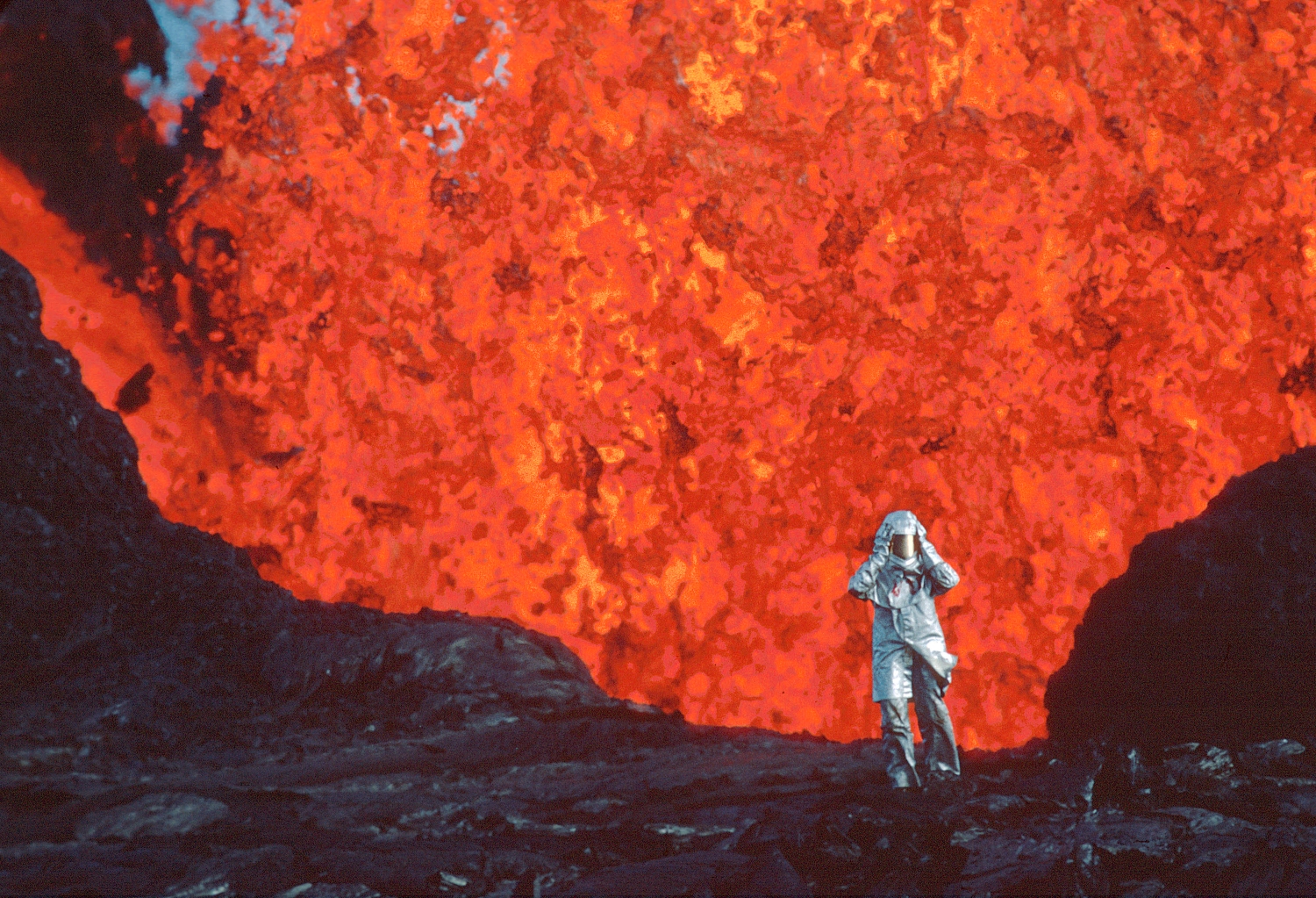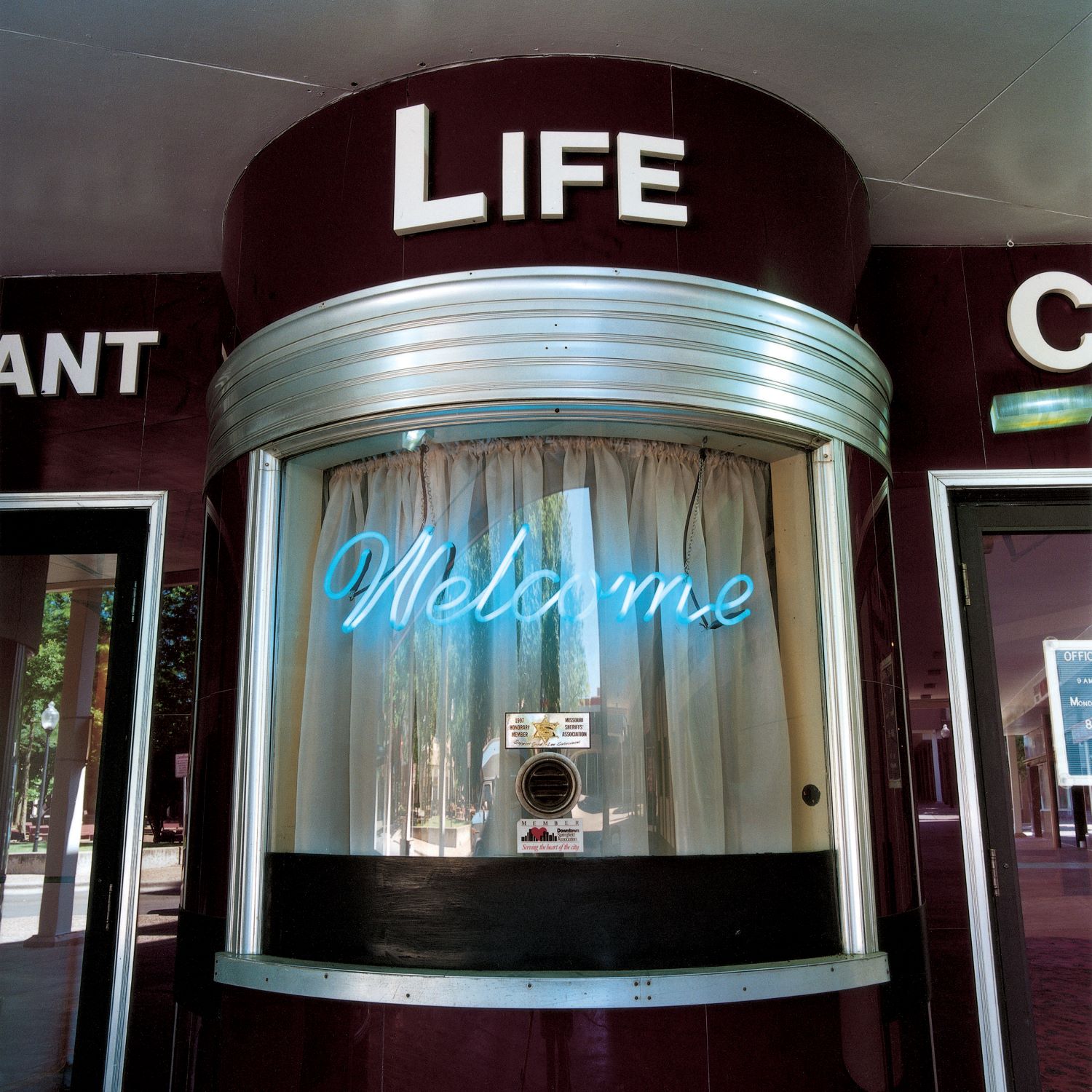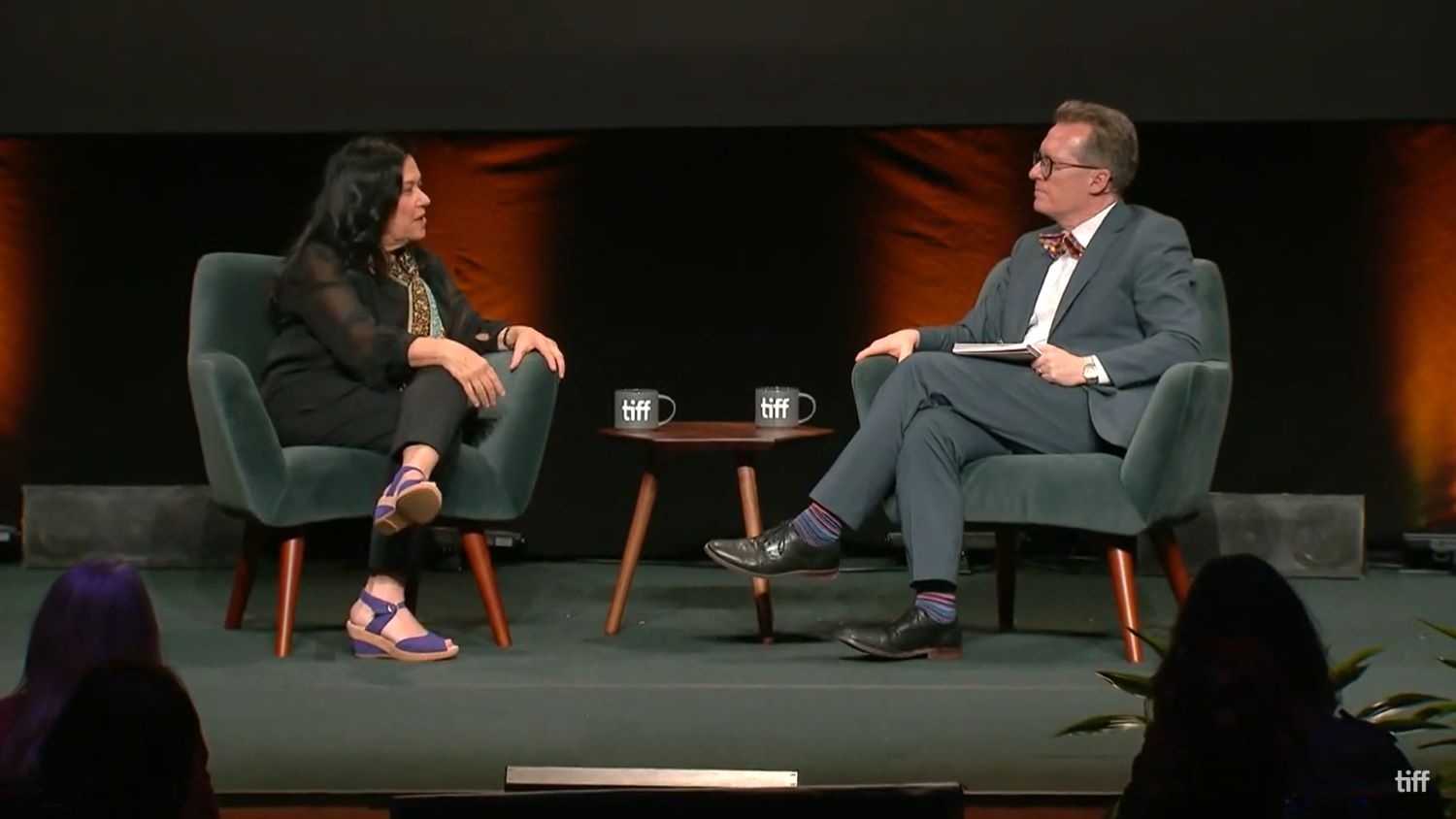“They left such a tremendous imprint in the memories of people who worked with them, family members, and those who knew them and loved them,” says Fire of Love director Sara Dosa about Maurice and Katia Krafft. The late love-struck volcanologists fuel the year’s most thrilling romance in Fire of Love. This masterfully assembled archival odyssey mines the wonders that the Kraffts left behind. Their imprint is perhaps strongest in the sense of wonder through which Dosa navigates their footage and research. Fire of Love exhilaratingly evokes the curiosity that defines the Kraffts’ seemingly unquenchable thirst for knowledge. This film is for anyone buoyed by life’s big questions, yet driven by the magnetic pull of romance.
Although the Kraffts died doing what they love in at the foot of Mount Unzen in Japan in 1991, Dosa considers them “co-creators.” Dosa, speaking with POV via Zoom ahead of the film’s release, explains that the co-creator relationship comes from her roots in cinéma vérité. After docs like The Last Season (2014) and The Seer and the Unseen (2019), Fire of Love marks her first archival tapestry.
“To embrace that sense of co-creation, we used hallmarks of vérité filmmaking such as deep listening and building relationships of trust with the people in the films,” explains Dosa. “In this case, it was listening to people like Maurice’s brother, Bertrand, in France.” Moreover, the film actively “listens” to the extensive work the Kraffts left behind to build relationships with the subjects themselves. “They left behind such a wealth of materials,” observes Dosa. “Not just the 16mm footage and still photography they shot, but they authored nearly 20 books.”
Into the Unknown
Dosa admits that harnessing the Kraffts’ bravery to venture into the unknown offered an early guiding light. She says her team was readying a scout for a different project in Siberia in April 2020 when the COVID-19 pandemic made an observational production impossible. Dosa says she encountered the Kraffts during research for The Seer and the Unseen and found inspiration in their archive. “Everyone on my team and, of course, the country and the world were grappling with such fear and loss and uncertainty and the unknown,” Dosa observes on drawing from the Kraffts amid COVID. “To be met with these people who were so skilled at navigating uncertainty and went into the unknown with curiosity and boldness, who had not just reconciled the possibility of death, but also knew what was most meaningful to them, was a guiding light through such a hard time.”
A year later, Fire of Love was already generating heat on the festival circuit. Doc fans got a taste of it when the work-in-progress was a winner of the first look Pitch Prize at the Hot Docs Forum. Teamed with producers Shane Boris (The Edge of Democracy) and Ina Fichman (The Gig Is Up), Fire of Love’s pitch wowed the virtual crowd with its unlikely love story. Dosa says that her connection to the Montreal-based Fichman came via her longtime collaboration with Boris, who previously worked with Fichman on Elizabeth Lo’s doggie doc Stray, which won Best International Feature at Hot Docs 2020.
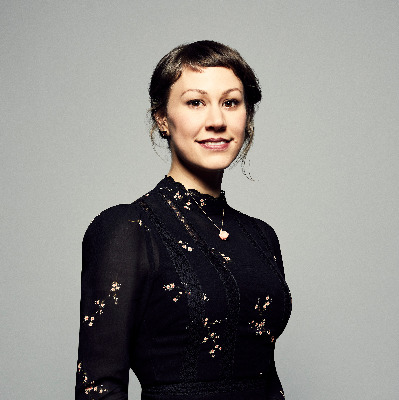
“They were finishing the distribution of Stray as we started development on Fire of Love. We needed a producer who had archival experience and who could also speak French, and Shane knew she was the one,” says Dosa. “I had known Ina socially through the documentary circles in the U.S. She was able to secure archival rights to Maurice and Katia’s footage through Image’Est in Annecy, France.”
Mining the Archives
The Kraffts’ archive alone comprises between nearly 200 hours of 16mm footage. Dosa notes that the through-line for navigating the sheer volume of material was tapping into the duo’s brainwave. “We wanted the film to feel the most true to them,” explains Dosa. “It was important to be accurate and factual, but also to speak to the higher truth of their spirit. They were such philosophical, playful, humorous, wise idiosyncratic people. We really wanted the film to feel imbued with their way of being in this world.”
Although archival nature situates the Kraffts’ story as a retrospective, the film feels as if it unfolds in the present tense with the volcanologists serving as active agents in their own story. From the opening needle drop that introduces Katia and Maurice as rock stars shaking up a staid field, Fire of Love marches to the Kraffts’ unique rhythm. Images feature the volcanologists playfully sticking their noses into volcanic abysses and studying the aftermath of eruptions to learn the scale and velocity of activity. There is a sense of play to the footage they shot, both of the volcanic activity and of themselves navigating the sites. The scientists’ curiosity is palpable as they tests the limits of the natural earth. So too is their intimate connection as the look of love frames every 16mm shot.
A Volcanic Love Story
“The first and foremost guiding principle that we had when narrowing down this footage was that we wanted the film to be a love story,” explains Dosa. “That felt truest to Katia and Maurice’s experience with volcanoes.” While the Kraffts’ filmed together extensively in the field, one of them is often behind the camera when the other demonstrates the findings. Katia, say, might be filming as Maurice tiptoes the precipice of the inferno. Ditto the camera’s gaze on Katia as Maurice records her while she observes the flowing lava over which he’d love to steer an aluminum boat.
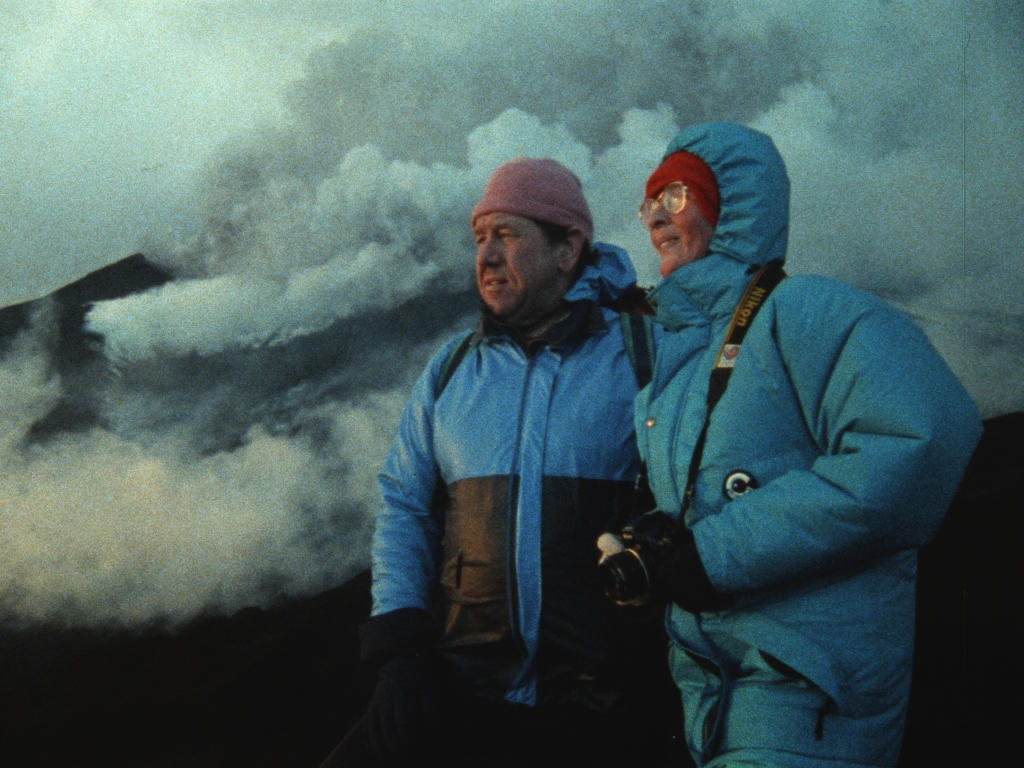
“There’s a line in a book that Maurice wrote where he says, ‘For me, Katia and volcanoes, it is a love story.’ That gave us the sense that not only is this a story about Katia and Maurice’s relationship, but it’s a love triangle,” observes Dosa. “Katia, Maurice, and volcanoes form a kind of triad.” By interpreting the text and intuitively observing both the compositions and body language of the footage, the film offers a creatively authentic capsule of the Kraffts’ relationship.
A sense of infidelity emerges when work prevents the Kraffts from venturing into the unknown together. When the devastation of the eruption of Nevado del Ruiz brings Katia to Colombia alone and work commitments leave Maurice on a press tour, the death toll of the volcano evokes the sting of an abusive lover as she wades through the aftermath when local politicians didn’t heed the scientists’ calls for an evacuation. Haunted by loneliness and sharing the chill of grief with villagers wading through mudslides and refuge, Katia dives passionately into research that will save future lives.
Bridging the Gaps
Guided by a desire to show the Kraffts’ togetherness, Dosa notes that she turned to the talk shows, variety hours, news segments, and travel magazines that made them unlikely celebrities. “They had a visual footprint on these television programs, but it was still limited,” says Dosa, noting this stream of archive yielded about 50 more hours of material. “For example, there’s one fabulous interview with the two of them from 1985 where they’re bantering back and forth. They’re really funny. It’s one of the only interviews of them together where they go deeper rather than just talk about the science of volcanism. That interview was cut in a way where Katia would not even finish her sentence and the interview would be interrupted by intense ’80s synth music. I’d look at it and go, ‘Oh! What do we do now?’”
Fire of Love finds its spark in a master class of editing as cutters Erin Casper and Jocelyne Chaput seamlessly navigate the limitations of the archives. In cases like the aforementioned interview where the team had to work with weird production choices, they embraced creative alternatives to explore the Kraffts’ romantic sense of wonder. “In cases like that, we ended up pausing on the footage and holding certain shots so that the audience could see Katia’s expression,” explains Dosa. “We couldn’t necessarily go any further with that footage. We let Katia and Maurice guide us themselves while embracing the limitations of the footage to focus on the story.”
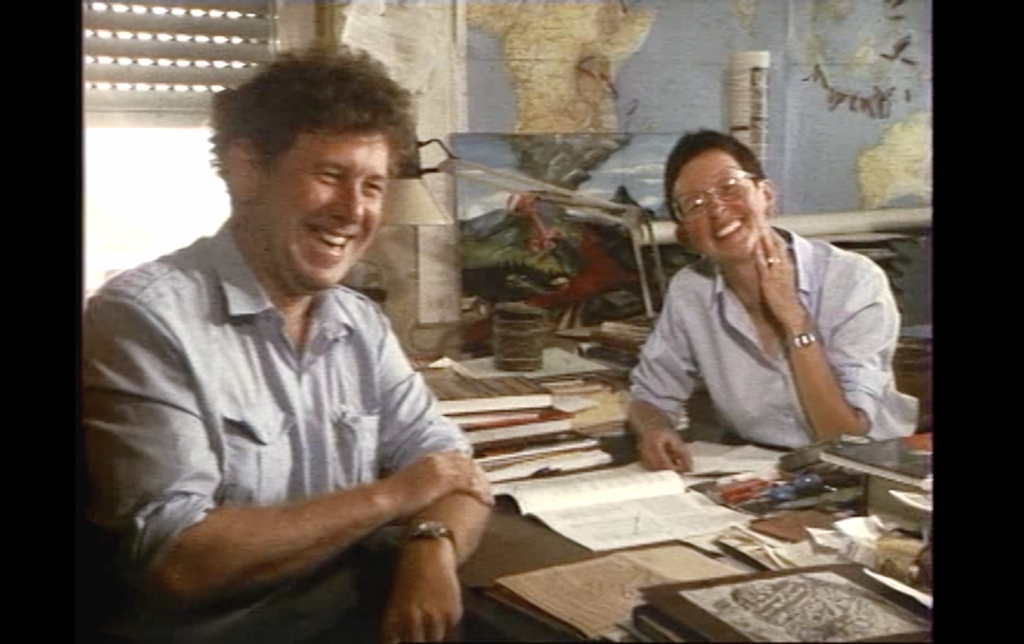
The Sound of Love
Similarly, the Kraffts’ skeleton productions mean that Dosa’s team had to get resourceful with extensive footage shot without synchronous sound. From the volcanic booms, to the footsteps, to the car noises that match the make and model seen on screen, every sound effect in Fire of Love is a meticulously researched creative choice. However, the narration opens up the archival elements and explores the fissures in between.
Books lend musings scientific, romantic, and philosophical to voiceover narrated with offbeat awe by Miranda July. While July muses on love and the natural world, another voice pulls the tectonic plates together: Katia’s. Although Fire of Love honours the Kraffts’ work, Dosa shows a special affinity for Katia. Dosa says the sexism of the time was evident in the archives where celebrity interviewers would herald Maurice as “the great volcanologist” and Katia as “his wife.”
“There was much less of Katia, especially in the audio, which made us find ways to bring her into the film to get a sense of her personality, her insights, and her profound contributions to science,” says Dosa. “Luckily, she was the primary author of a lot of their books and she often wrote from the first person’s perspective.” Actress Alka Balbir reads Katia’s inquisitive words as her voice becomes a driving force in the film.
“It was important that the film could level the inequity and get a sense of who she was as a person,” observes Dosa. “Katia was so courageous and so fearless, but also had such a deep and wise understanding of fear. One of my favorite lines in the film is ‘Curiosity is stronger than fear.’ Especially in these uncertain times we’re undergoing, that’s become a credo of sorts for me.”
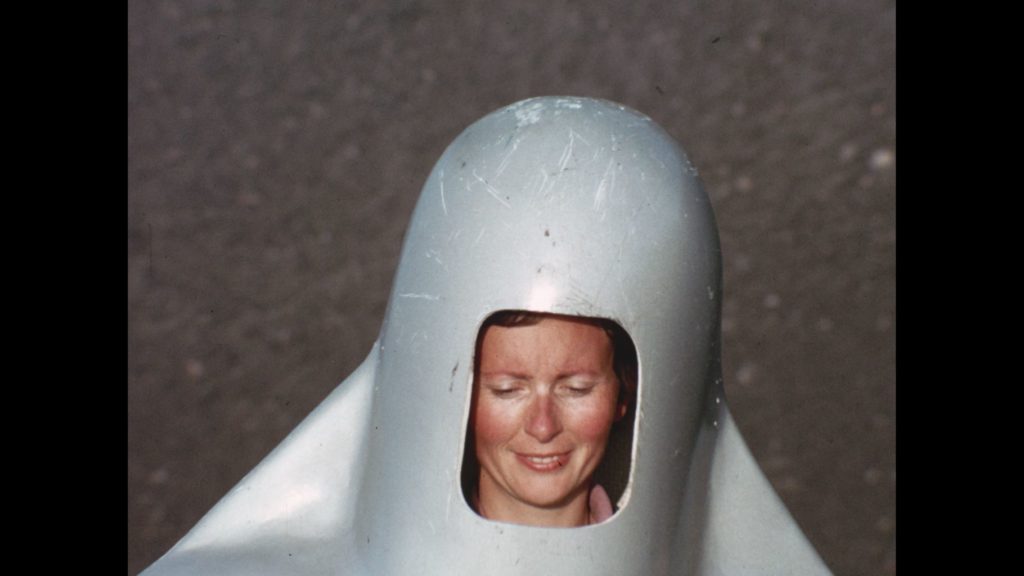
Cinematic Krafft
Moreover, Maurice and Katia’s contribution in Fire of Love isn’t merely scientific or philosophical—it’s cinematic. The documentary illustrates the Kraffts’ shrewd ability to convey their discoveries in filmic language. This cinematic prowess is key to the accessibility of their research. There’s a true sense of authorship to the footage as Maurice and Katia convey the magnitude of a volcano’s power.
One shot, for example, might have Maurice and Katia poking their heads through craters, while another might show Katia scratching her head in wonder or watching in awe as steam sends her hat billowing down a mountainside. Another sees the couple ride off into the sunset with a colleague on donkeys—if for no other reason than to blaze a trail of footprints that afford perspective as Dosa cranks Ennio Morricone’s theme from The Good, the Bad, and the Ugly on the soundtrack while the scientists tame the volcano. They are masters at conveying a sense of scale.
Guided by Love
The footage in Fire of Love is awe-inspiring, but doubly so when one considers that the Kraffts were rationing cumbersome 16mm stock, delicate and flammable celluloid, on exploding mountains with lava flowing around them. “I have such profound awe for their skills as filmmakers,” says Dosa. “I’ve learned from the beauty of their compositions, the skills that they had as storytellers, and they were so good at communicating scale.”
However, the guiding principle of the Kraffts’ work is, inevitably, love. “They were so enchanted by their subjects,” observes Dosa. “They were so absolutely in love with volcanoes that they were utterly drawn the closest that they could get. By doing so, you can feel that love in their frames.” Dosa says that 16mm heartbeat proved ultimately distinguishes the Kraffts’ films and photographs from their contemporaries. “One of the greatest lessons from their work is what it means to capture something you love through images,” says Dosa. “How powerful that can be when your own emotions, even if they might seem invisible, can be detected. That’s something I will always take with me on every project moving forward: the fuel, the power, the force that that love has. They taught me how meaningful it is to tell stories where you’re guided by that love.”
Fire of Love opens in select U.S. theatres on July 6 and in Toronto at TIFF Bell Lightbox, Vancouver, and Montreal on July 22.
Read more about Fire of Love in issue #116.




